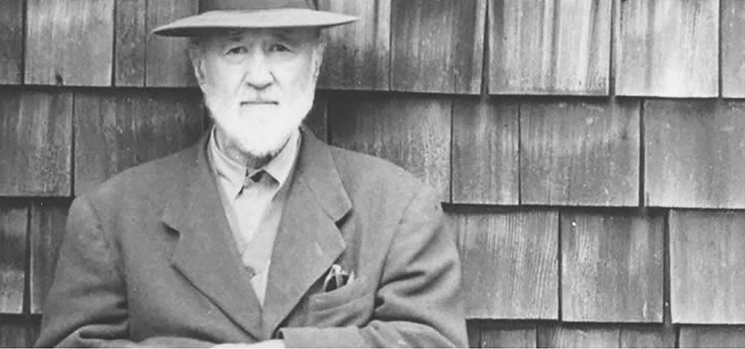The Unanswered Question is a piece for strings and winds, where strings and winds are in the position of contrast to each other, however, not in the usual or the classical sense of contrast that focuses of the different character of the sound, but also, in this case, the use of different harmonies to elevate this contrast and tension even more; that plus using different rhythmical figures for the winds than the ones used for strings and most importantly the different timelines of the winds and the strings as their bar lines do NOT line up. So for all we know, the strings and the winds materials are completely different and seem to be unrelated. Nevertheless, Ives forces these two textures together to form a confusing yet very interesting texture that emerges from this combination.
The music starts with the strings, forming a very conventional and tonal texture in G major. In the first three measures, an extended G major chord in root position. The strings texture continues for 12 or 13 bars, as the bar 13 can be thought of as an ending to the previous session which is suggested by the quasi cadence in the bass strings in bar 13, or as a beginning to the new session as suggested by all the other strings that come back to their original position, this minor double-faced tweak gives the feeling of smooth continuum despite the repetition.
The voices of the strings are very widely positioned and they form a spacious comfortable fabric.
The strings continue this texture till the end with very slight changes that are actually insignificant in regards to the general context until finally finishing at the same G Major chord in the same initial position.
As the first cycle of strings ends, a trumpet melody enters above the string texture. A melody that seems completely out of context and out of the harmonical language already established, and it is safe to assume that this trumpet melody is the “question” that Ives referred to in the title.
It’s crucial to notice the role of the trumpet, which plays a connecting independent role between the two textures; As it is placed in the middle between the strings and the winds. The trumpet plays a melody based on a diminished chord, which none of its notes is in G major, and this melody is basically all that the trumpet plays, however, this melody appears each time in a different timing in regards to the strings.
The trumpet melody has two versions that seem identical except for the last note of each version that switches back and forth between C and B.
The trumpet question evokes the texture of the upper wind which resembles a sort of an answer, however, not a satisfying one, as the trumpet asks again and again but its question remains unanswered.
It is interesting to notice that a trumpet is closer in nature to the winds section rather than the strings, therefore, the answers of the winds represent the subconscious of the trumpet; and I do not only suggest that because of the similar acoustic nature, but also for the development of the answers that get more complex, agitated and frustrated with each time the trumpet asks, plus if we look closely, we would see that the wind texture contains elements from both the trumpet and the strings materials.
The wind textures_or may I say the answers_ develop from having slow time indications, soft dynamics, and long notes values gradually to faster time indications, stronger dynamics, and shorter notes values.
A historical look into Ives’ life might put things into perspective. As Ives was very much influenced by his father who had similar mentality; A story about him and his father says that he once took him to observe marching bands in the streets and asked him to pay attention to how the sounds of two different bands, playing different music, coming from different directions could combine and form something totally new.
It’s also worth mentioning that Ives was a church organist, and he has the counterpoint mentality, and his counterpoint techniques developed beyond the classical sense; as we see in this composition how he preserved the independence of winds, trumpet, and strings, in material, time, and texture, nevertheless, each of them can be listened to independently and would still have some value by itself.



